I am using Visual Studio 2015, OpenCV.3 and EmguCV.3. My code represented below and the result is shown in the picture. I know that the problem is the input values of HoughCircles function, but I don't know which inputs are suitable for this picture. I appreciate any help.
Image<Gray, byte> OriginalImage = new Image<Gray, byte>(Openfile.FileName);
Image<Gray, byte> ResizedImage = OriginalImage.Resize(OriginalImage.Width / 2, OriginalImage.Height / 2, Emgu.CV.CvEnum.Inter.Cubic);
//********** Convert Image to Binary
Image<Gray, byte> smoothImg =
ResizedImage.SmoothGaussian(5);
smoothImg._Erode(5);
smoothImg._Dilate(5);
Image<Gray, byte> BinaryImage =
smoothImg.ThresholdBinary(new Gray(20), new Gray(255));
//********** Find Circles
Image<Rgb, byte> ROIImgScaledCircles = ROIImgScaled.Convert<Rgb, byte>();
CircleF[] circles = smoothImg.HoughCircles(
new Gray(180),//cannyThreshold
new Gray(60),//circleAccumulatorThreshold
2.0, //dp:Resolution of the accumulator used to detect centers of the circles
10.0, //min distance
10, //min radius
128 //max radius
)[0]; //Get the circles from the first channel
foreach (CircleF cir in circles)
{
ROIImgScaledCircles.Draw(cir, new Rgb(235, 20, 30), 1);
}
pbxCircles.Image = ROIImgScaledCircles.ToBitmap();
Original Image:
Founded Circles:



